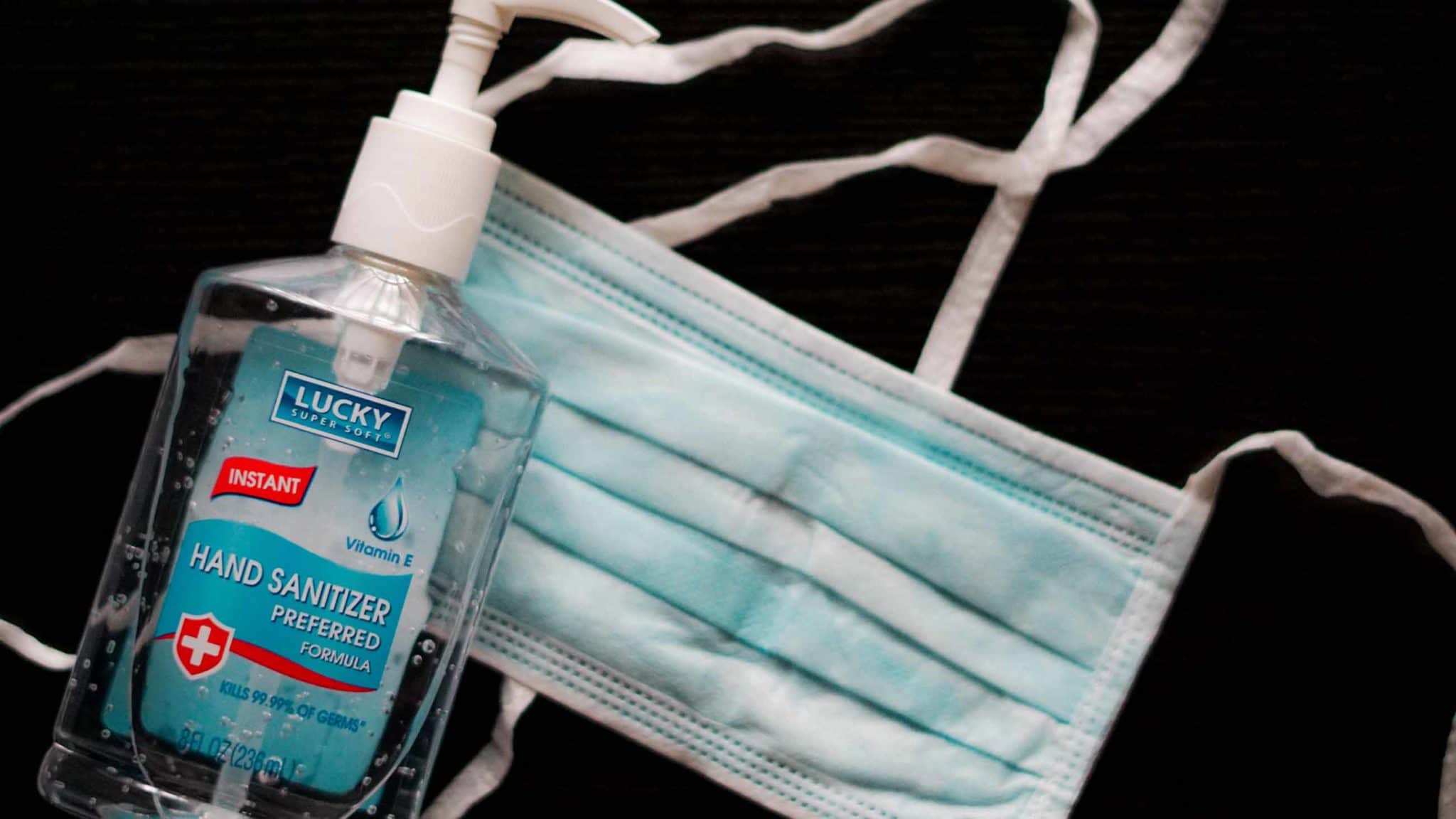Hand Sanitizer and Masks: More Covid-19 Questions From Readers
As the coronavirus pandemic continues to spread, Undark readers have been sending us numerous and often insightful questions, comments, and observations on the subject. We’ve asked the Pulitzer Prize-winning science journalist and Undark’s publisher, Deborah Blum, to dedicate some time to responding — both as a reader service, and as another way for Undark to cast some light into the darkness of misinformation, rumor, fear, and conjecture now percolating through the information commons.
You can find previous iterations of this feature here. And if you have questions, comments, or would like to see some other aspect of the Covid-19 crisis explored in a subsequent feature, please write us at: [email protected]. (Reader questions and comments below have been edited and sometimes combined for clarity and brevity.)
There’s been so much fighting over requirements to wear masks in the pandemic. It makes me wonder if it’s worth it. How much of a difference do they actually make?
Yes, wearing protective masks has become a surprisingly contentious, even political issue, as we try to find the best ways to limit the spread of the novel coronavirus. In the United States, people have compared mask wearing to slavery, berated employees trying to enforce mask requirements, and in one egregious case in Michigan, a store security guard was shot to death after informing a customer that she could not enter without a mask.
So, let’s take the politics out here and just talk about what science tells us about the protective value of wearing masks. First of all, it’s important to note that droplets expelled from the nose and mouth appear to be the primary source for spreading Covid-19, the disease caused by the SARS-CoV-2 virus. Although the virus causes more than respiratory infections, it appears to replicate rapidly in the lungs. Recent research emphasizes the idea that even when we speak or just exhale, viral particles spread through the air and are eventually deposited on a wide range of surfaces. One study showed that the particles can remain aloft for up to 14 minutes, at least in a closed environment. More forceful exhalations can scatter viral particles to an even larger degree, and people who talk loudly have been found to exhale more particles. The U.S. Centers for Disease Control and Prevention (CDC) even reported last week that a choir practice in Washington became a super-spreader event, in part because the deep exhalations used in singing likely fanned the virus outward.
Masks can interrupt this process in two ways. First, they can filter out viral particles from the air as we inhale. This is especially true for high-grade protective gear, like N95 masks used by health care workers, which can block up to 95 percent of microbial particles, but obviously less so for the looser fitting cloth or surgical masks available for every day use. Still studies also show that multilayered cloth masks — using a combination of tightly woven fabrics, or containing a pocket for a filtering material — can offer protection against aerosolized droplets.
Equally important, or perhaps more so, there’s a growing body of evidence that wearing masks protects others as well. That is, these face coverings help stop the viral particles that an infected person might be exhaling into the space around them, especially important with Covid-19 because so many people don’t realize that they are infected. The CDC estimates that at least 35 percent of people infected with the new coronavirus may be asymptomatic. That raises the risk that supposedly healthy people, who think they have no need to wear a face mask, are actively spreading the virus.
A recent study out of Hong Kong, which used Covid-19-infected hamsters, found that different types of face-covering materials put over cages could reduce viral transmission by up to 75 percent. And an analysis of human data, published in preprint, showed that even homemade cloth masks could restrict the outward spray of viral particles. In fact, the authors of that study found the evidence so compelling that they argued that if governments do not institute mask requirements, then organizations and stores should use a “no mask, no service” policy, which would include the ability to supply masks if needed. As they note: “if everyone is wearing masks to decrease the chance that they themselves are unknowingly infecting someone, everyone ends up being more protected.”
So the best, apolitical information out there at this point tells us that face masks can play an important role in protecting ourselves and each other. Just remember to clean and store yours carefully. And that masks are most effective when combined with other precautionary methods, like social distancing whenever possible and, as always, enthusiastically washing your hands.
Prior to Covid-19, there was concern that overusing antibacterial/viral sanitizers, towelettes, and cleaners might contribute to the evolution of “superbugs” and microbial resistance. I am curious to know what your research might reveal about the current emphasis on hand sanitizers and how that’s impacting bacterial evolution.
For the last few years, researchers have raised concerns about the overuse of hand sanitizers and their potential to increase bacterial resistance. Much of this focused on an antibacterial ingredient known as triclosan, which was banned by the U. S. Food and Drug Administration (FDA) in 2016. But resistance questions have also been raised about alcohol-based sanitizers, which tend to be preferred by medical practitioners.
These alcohol-based sanitizers have been highly recommended for use against viruses like SARS-CoV-2. Consistent evidence shows that disinfectants with an isopropyl alcohol content between 60 and 70 percent are remarkably effective at breaking down the virus’s oily outer layer and thus deactivating it. As a result, so many people have begun using hand sanitizers and sanitizing wipes that supply shortages remain a problem in this country and others.
And you’re right: This increase in sanitizer use has indeed led some scientists to warn that this trend could foster increased bacteria mutation and, therefore, resistance to disinfectants. (A literature search suggests less overall concern about viral resistance at this point.) In general, this is a gradual but worrisome process. One study of Enterococcus faecium, bacteria normally found in the gastrointestinal tract of both humans and animals, but which can spread disease outside the body, found that over an 18-year period, the microbe developed a 10-fold tolerance to alcohol-based disinfectants. Along the way, it also became increasingly resistant to critical antibiotics, such as vancomycin. In fact, some studies show that resistance to disinfectants can help prompt antibiotic resistance. These combined bacteria mutations can pose a serious challenge to keeping people safe. In fact, doctors have cited the spread of Covid-19 and the need for antibiotics in fighting secondary infections, like pneumonias, that may follow the virus, to highlight the challenges of resistance.
It’s too early in the pandemic to know if people will continue to use sterilizing agents at the level seen now, or for how long they will do so. But the concern you raise is one reason that experts have warned against the use of home-made sanitizers, which may contain too little alcohol to fully kill microorganisms and thus may foster mutations in the survivors. That’s one reason that the CDC has published guidance on the use of hand sanitizers. And it’s also one of the reasons that health experts emphasize that washing your hands with warm water and soap is by far the preferred disinfection method. (Water and soap are also less poisonous to the user. One result of the uptick in disinfectant use has been an uptick in disinfectant-related accidental poisonings.)
Given this scenario, it’s definitely worth raising awareness of these concerns. As one researcher wrote: “Our attempts to protect ourselves from Covid-19 may also be creating an environment where even more antimicrobial resistant microorganisms can emerge. Given that antimicrobial resistance already causes more than 700,000 deaths a year worldwide, it’s important that we act with caution to prevent further impact.”
That’s it for this installment, but if questions or observations occur to you as this pandemic moves forward, don’t hesitate to contact us. We’ll do our best to include your input or otherwise provide you with realistic answers — and we can promise you they’ll be well-researched ones. Please email us at [email protected].












Comments are automatically closed one year after article publication. Archived comments are below.
I wanted to buy N95 mask for myself. Just wanted to know if we face any difficulty breathing while doing aerobic exercises. Also wanted to know about the effectiveness of valved N95 masks.
How many sanitize and mask used during the covid-19.
2
Medical authorities in the UK & Australia advise there is no use for masks. In fact they claim masks are harmful. Depriving lungs of oxygen and moisture builds up in them causing a build of germs and bacteria.
Social distancing, hand washing and hand sanitising are the means of preventing the virus.